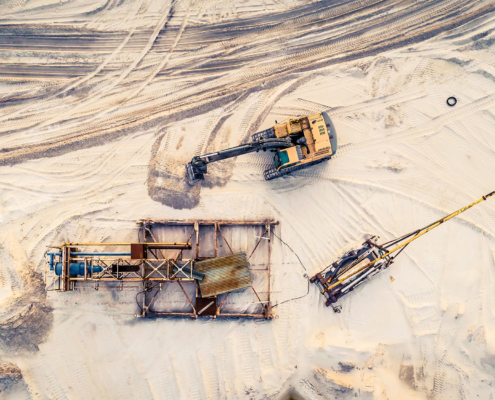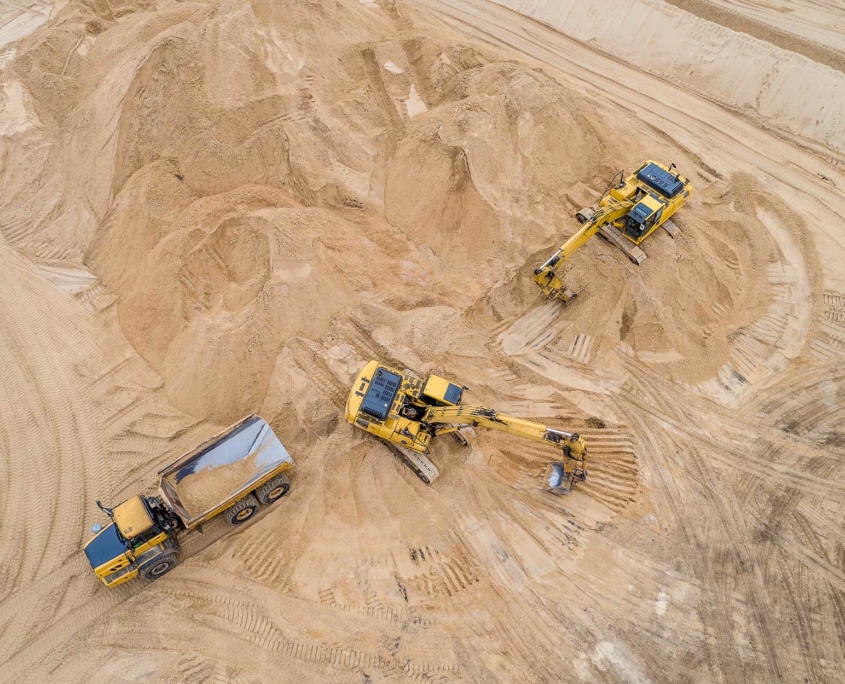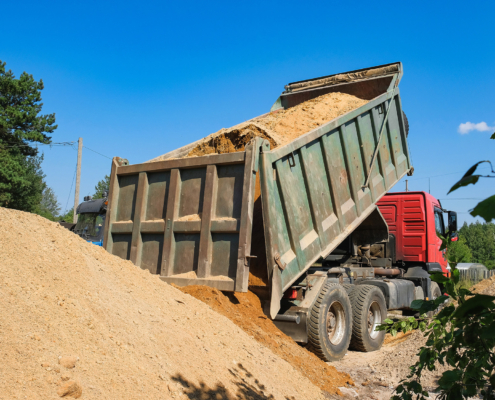 https://pontotocsandandstone.com/wp-content/uploads/2025/09/Frac-Sand-Market-Trends-and-Forecasts.jpg
1250
2000
AbstraktMarketing
/wp-content/uploads/2021/08/Pontotoc-White-Logo.png
AbstraktMarketing2025-09-05 20:26:142026-01-07 16:14:12Navigating Growing Demand: Frac Sand Market Trends and Forecasts
https://pontotocsandandstone.com/wp-content/uploads/2025/09/Frac-Sand-Market-Trends-and-Forecasts.jpg
1250
2000
AbstraktMarketing
/wp-content/uploads/2021/08/Pontotoc-White-Logo.png
AbstraktMarketing2025-09-05 20:26:142026-01-07 16:14:12Navigating Growing Demand: Frac Sand Market Trends and ForecastsEverything You Need to Know About Frac Sand
Most frac sand is a natural material made from pure sandstone. Once hydraulic fracturing became the industry-standard method of removing oil and gas from rock formations in 2010, the demand for frac sand exploded.
Read more about how frac sand is mined and the types contractors like Pontotoc Sand & Stone offer. Here’s everything you need to know:
What Is Frac Sand?
Frac sand is pure quartz material of a round and hard uniform size. Specifically, it’s processed from high-purity sandstone, which differs from other types of sand. Other sand grain is a mixture of several types of minerals less durable than quartz. Frac sand is washed, sorted, and dried before it can be shipped after hydraulic fracturing.
How Is Frac Sand Made?
Frac sand is suspended in fluid and injected into gas and oil wells under high pressure. Once fluid pressure opens fractures, sand grain flows into the spaces. This material is crush resistant, making it optimal for hydraulic fracturing. Frac sand, water, and other chemicals are added into fractures of the shale layer, releasing liquid petroleum which flows up the system for collection.
What Is Frac Sand Used For?
Frac sand is a proppant used by various gas and oil companies during hydraulic fracturing. Providers extract natural gas and petroleum from shale with a pressurized mixture. Pontotoc Sand & Stone is an industry-leading provider of frac sand. We are experts in creating in-basin material for gas and oil extraction.
Frac sand is an essential variable in the fracturing process, as natural gasses, natural gas liquid, and oil are released from the shale into pores in the rock. Frac sand is beneficial for holding fractures open to continue removing fossil fuels, primarily when the water stream affects the size of fractures. Any agent holding open fractures is called a proppant.
Water pumps won’t run all the time, so frac sand ensures fractures don’t close and deflate pores. This allows natural gas and oil to continue to be produced. Proppants are irreplaceable and boost the overall efficiency of fracing wells.
What Makes Proppant Frac Sand Different From Other Materials?
Frac sand differs from other types of sand because of its roundness and high silica content. While other sand is polluted with minerals and rocks, frac sand mainly contains durable quartz that withstands extreme underground pressure.
Interested in partnering with a company that provides high-quality frac sand for immediate use? Check out our silica sand production process at Pontotoc Sand & Stone.
Types of Frac Sand
Frac sand is supplied in various sizes, ranging from less than a millimeter to over two millimeters. Most frac sand used for industrial purposes is between 0.4 to 0.8 millimeters. Proppants used for various industrial purposes must meet demanding specifications. Characteristics of quality frac sand include:
- Durability to avoid crushing when fractures close
- High-purity silica sand
- Grain size matched to project specifications
- A round shape carried with ease throughout hydraulic fracturing
Using suitable sand for industrial processes is a critical component throughout operations. Using the wrong sand creates delays, reduces mine efficiency, and costs your company unnecessary expenditures for replacement. Outlined below are the different types of frac sand:

Brady Brown Permian Frac Sand
Brady Brown sand, also known as permian frac sand or hickory sand, originated in Texas at the Hickory Sandstone formation. This type of sand contains less silicon dioxide than other materials. Brady Brown permian sand is utilized in wells drilled less than 8,000 feet below the core surface.
Ottawa White Sand
Ottawa White sand, also known as Northern White sand, contains 99% pure quartz, is found in the Ottawa and Wisconsin regions. This type of sand is used for its ability to resist high pressure without collapsing. Ottawa White sand is rounder than other types of material and increases overall oil and gas flow.
40 / 70 Mesh
40/70 mesh frac material contains greater silica content with a highly permeable proppant structure able to withstand high pressure and closure. Its advantages include low acidic solubility, strength to withstand the pressure of 10,000 PSI, and a high silica content providing excellent crush performance.
40 / 80 Mesh
40/80 mesh material is medium-density sand providing quality pathways for oil and gas production. 40/80 mesh has high cracking points, an unmatched crush performance, and low turbidity capabilities that reduce total dust.
100 Mesh
100 mesh material is the most common type of frac sand used by industrial companies. Its advantages include a high crush resistance, withstanding stress up to 14,000 PSI, and minimizing fines thanks to high sphericity.
Industrial Applications and Uses of Frac Sand
From high-quality frac and industrial sand to durable crushed limestone, providers like Pontotoc offer a wide variety of products that serve multiple applications and industries, including:
Oil and Gas
Since the boom of hydraulic fracturing around 2010, oil and gas companies have relied on frac sand to extract materials successfully and efficiently from the ground.
Construction
Did you know that sand is the most common material used in construction? In fact, the only more utilized resource in the world is water. Every construction process we assist with relies on sand, which is why Pontotoc provides indispensable quality material for the best modern construction. Frac sand provides the foundation for limestone rock, a critical material for any construction build.
Roofing
Pontotoc’s industrial sand withstands all extreme weather conditions and UV rays, making our material the optimal component for roofing shingles.
Glass
All material produced in the glass industry needs high-quality silica sand to maintain its durability and strength.
Pontotoc Sand & Stone: The Industry-Leading Provider of Industrial Frac Sand
At Pontotoc, we believe in helping our clients achieve maximum efficiency. That’s why we implement a quality assurance process that removes impurities and debris from our products before shipping them to your facility. Partnering with us means you always receive sand that’s ready for immediate use. Contact us today to learn more about our industry-leading frac sand proppant.
Related Postings
 https://pontotocsandandstone.com/wp-content/uploads/2025/09/Frac-Sand-Market-Trends-and-Forecasts.jpg
1250
2000
AbstraktMarketing
/wp-content/uploads/2021/08/Pontotoc-White-Logo.png
AbstraktMarketing2025-09-05 20:26:142026-01-07 16:14:12Navigating Growing Demand: Frac Sand Market Trends and Forecasts
https://pontotocsandandstone.com/wp-content/uploads/2025/09/Frac-Sand-Market-Trends-and-Forecasts.jpg
1250
2000
AbstraktMarketing
/wp-content/uploads/2021/08/Pontotoc-White-Logo.png
AbstraktMarketing2025-09-05 20:26:142026-01-07 16:14:12Navigating Growing Demand: Frac Sand Market Trends and Forecasts https://pontotocsandandstone.com/wp-content/uploads/2025/08/How-Supply-Chain-Disruptions-Impact-Frac-Sand-Availability-and-Pricing.jpg
1250
2000
AbstraktMarketing
/wp-content/uploads/2021/08/Pontotoc-White-Logo.png
AbstraktMarketing2025-08-21 20:34:102026-01-07 16:14:13How Supply Chain Disruptions Impact Frac Sand Pricing and Availability
https://pontotocsandandstone.com/wp-content/uploads/2025/08/How-Supply-Chain-Disruptions-Impact-Frac-Sand-Availability-and-Pricing.jpg
1250
2000
AbstraktMarketing
/wp-content/uploads/2021/08/Pontotoc-White-Logo.png
AbstraktMarketing2025-08-21 20:34:102026-01-07 16:14:13How Supply Chain Disruptions Impact Frac Sand Pricing and Availability https://pontotocsandandstone.com/wp-content/uploads/2025/08/large-quary-for-frac-sand-mining.jpg
1250
2000
AbstraktMarketing
/wp-content/uploads/2021/08/Pontotoc-White-Logo.png
AbstraktMarketing2025-08-14 19:56:332026-01-07 16:14:13Understanding the Health and Environmental Impacts of Frac Sand Mining
https://pontotocsandandstone.com/wp-content/uploads/2025/08/large-quary-for-frac-sand-mining.jpg
1250
2000
AbstraktMarketing
/wp-content/uploads/2021/08/Pontotoc-White-Logo.png
AbstraktMarketing2025-08-14 19:56:332026-01-07 16:14:13Understanding the Health and Environmental Impacts of Frac Sand Mining